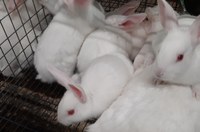The context

1) A large number of animal species can act as reservoirs of coronaviruses (e.g. Shi and Hu, 2008, Virus Research 133, 74-87).
2) Epidemiological and biological characteristics of coronaviruses, including their demonstrated ability to easily cross species barriers, suggest that animals that live in close contact to humans should be considered as part of a global control strategy in a ‘one health’ approach to evaluate if they could represent a risk source of infections for humans and vice versa (Shi et al., 2020, Science, pii: eabb7015. doi: 10.1126/science.abb7015; Leroy et al., 2020, One Health, doi: 10.1016/j.onehlt.2020.100133).
3) Public DNA sequence databases (European Nucleotide Archive, ENA: https://www.ebi.ac.uk/ena; Sequence Read Archive, SRA: https://www.ncbi.nlm.nih.gov/sra) contain a large number of information from next generation sequencing (NGS) projects from a variety of animal species produced for many different purposes that could be mined for other objectives.
4) We recently reported that these datasets can be mined to identify viruses that have been involuntarily sequenced together with the animal genome or transcriptome, as they were in the tissues that served for nucleic acid isolation (Bovo et al., 2017, PLoS One 12, e0179462).
5) Studies in humans and other species have demonstrated that the host genome (e.g. variants in the receptor genes) might confer different levels of resistance or susceptibility to coronavirus infections (e.g. Cao et al., 2020, Cell Discovery 6, 1-4). Host receptor and viral spike protein interactions can be predicted in silico (Qiu et al., 2020, Microbes Infection. doi:10.1016/j.micinf.2020.03.003).